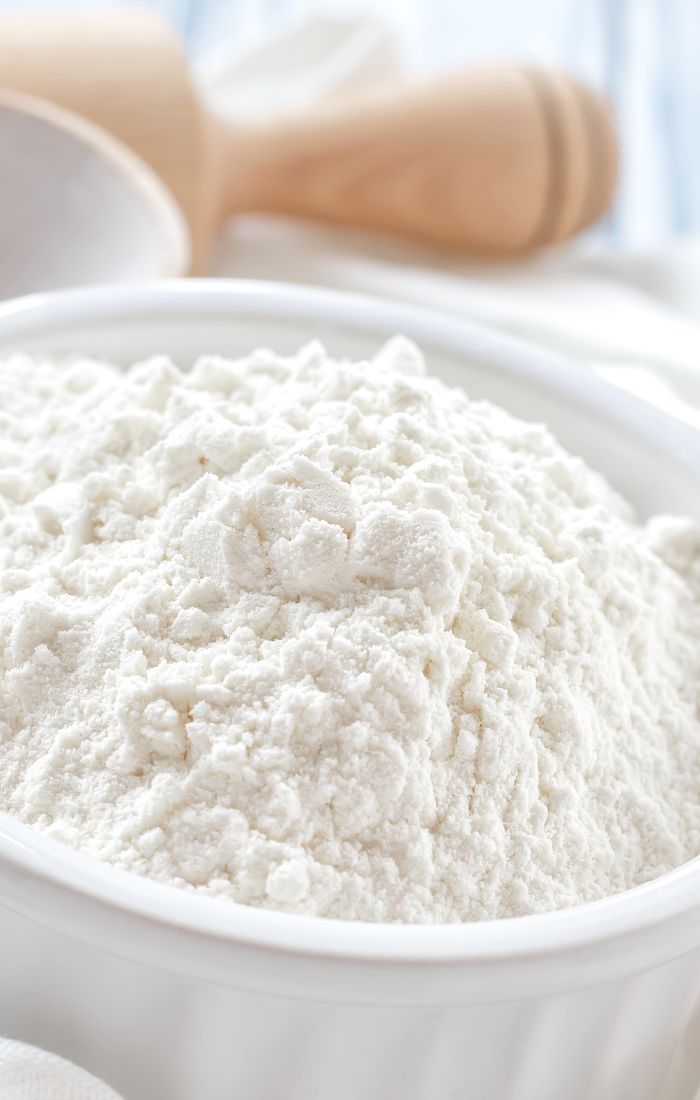How to Measure a Cup of Flour: The Spoon and Level Method


Learning how to properly measure flour is crucial to making sure your baked goods turn out.
If you don’t measure flour properly, then your baked goods can turn out too dense, dry, and/or flat.
To make sure you measure flour correctly, you need to make sure it’s not compacted. In the US, we typically use cups (1/4 cup, 1/3 cup, 1/2 cup, 1 cup, etc.) to measure ingredients in baked goods. However, the best way to measure flour is to weigh it. BUT, many people don’t have a kitchen scale or don’t want to bother with the scale. And that’s OK! You can still measure properly measure flour with a cup or spoon.
Flour can be tricky to measure accurately. The spoon and level method is a tried-and-true method that will help you get the perfect measurement every time.
Why Is It Important to Measure Flour Properly?
Flour is a dry ingredient, and it can be easily compacted. If you measure flour by scooping it directly from the container, you may end up with too much flour. This can make your baked goods dense and heavy.
The spoon and level method ensures that you get an accurate measurement of flour every time. This will help you create light and fluffy baked goods.
Should Flour Be Sifted?
Sifting flour is not always necessary, but it can be helpful in some cases. Sifting flour aerates it, which can help to create light and fluffy baked goods. It can also remove any large clumps of flour, which can improve the texture of your baked goods.
If you are baking a recipe that requires a light and fluffy texture, such as a cake or a pastry, you may want to sift the flour. However, if you are baking a recipe that does not require a light and fluffy texture, such as a bread or a cookie, you may not need to sift the flour.
How to Measure a Cup of Flour: Spoon and Level Method:
- Fluff the flour in the container to aerate it. This will help ensure that you get an accurate measurement.
- Spoon the flour into the measuring cup. Do not scoop the flour directly from the container, as this can pack the flour down and lead to an inaccurate measurement.
- Use the knife to level off the flour. Be sure to scrape the knife across the top of the measuring cup to remove any excess flour.
- Your measurement is now ready to use in your recipe.
How Much Should a Cup of Flour Weigh?
If you are using a kitchen scale and want to weigh your flour, 1 cup of all-purpose flour should weigh between 120 and 125 grams.
The spoon and level method will help make sure your cup of flour is not compacted. When you properly spoon and level flour, 1 cup will generally weigh between 120 grams to 125 grams.

Tips for Measuring Flour Accurately
- Always use the same measuring cup for each ingredient. This will help ensure that your measurements are consistent.
- Wipe down your measuring cups and spoons with a damp cloth before each use. This will help prevent any excess flour from sticking to the sides of the measuring cup and affecting your measurement.
Troubleshooting Flour in Baked Goods
- If your baked goods are dense or dry, you may be using too much flour. Try using spooning and leveling your flour next time.
- If your baked goods are crumbly or not holding their shape, you may be using too little flour. Try using more flour next time.
Use these best practices to measure flour properly and make sure your baked goods turn out fantastic. Now go bake something great!




